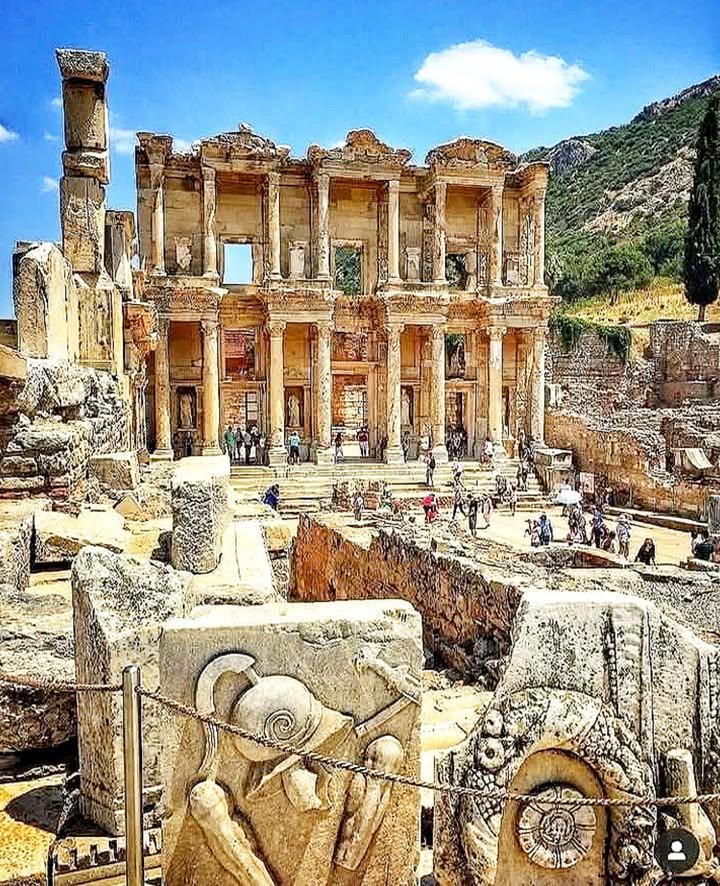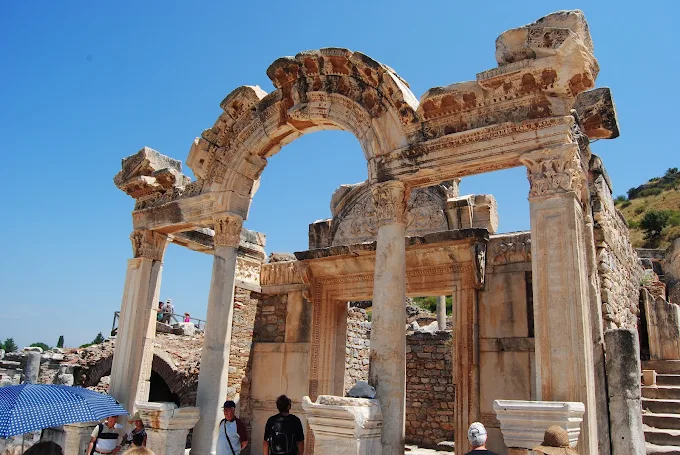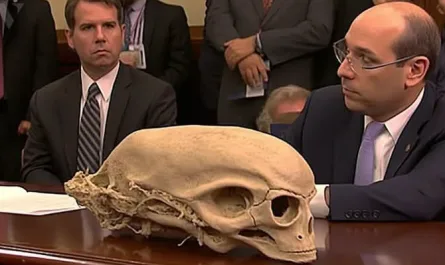Nestled among the ancient cobblestone streets of Ephesus, Turkey, the Celsus Library stands as a breathtaking testament to Roman architectural brilliance and the enduring pursuit of knowledge. Built between 114 and 117 AD, this monumental structure once housed 12,000 scrolls and served as a beacon for the greatest minds of its time. Today, its restored grandeur continues to captivate visitors, offering a window into the intellectual heart of the ancient world.

A Tribute to Celsus Polemaeanus

The Celsus Library was commissioned as a grand mausoleum and library in honor of Tiberius Julius Celsus Polemaeanus, a Roman senator and governor of the province of Asia. Constructed by his son, Gaius Julius Aquila, the library was both a tomb for Celsus and a cultural hub. Its location in Ephesus, a thriving metropolis of the Roman Empire, made it a fitting tribute to a man of such stature. The library’s dual purpose as a sepulchral monument and a repository of knowledge reflects the Romans’ reverence for both legacy and learning.
Architectural Marvel of the Ancient World
The Celsus Library was no ordinary building—it was the third-largest library of its era, rivaled only by the great libraries of Alexandria and Pergamum. Its facade, meticulously restored in the 20th century, is a masterpiece of Roman design. Towering columns, intricate carvings, and statues representing wisdom, knowledge, intelligence, and virtue adorn the exterior, inviting awe from all who approach.

Inside, the library’s ingenious design maximized space and preserved its precious scrolls. A double-walled structure protected the manuscripts from humidity and temperature fluctuations, while a central reading room, bathed in natural light, created an inviting space for scholars. The library’s capacity to house 12,000 scrolls underscores its role as a vital center for learning and intellectual exchange in the ancient world.
Resilience Through Time

The Celsus Library faced significant challenges over the centuries. Earthquakes, invasions, and the passage of time took their toll, reducing much of Ephesus to ruins. By the 3rd century AD, the library suffered severe damage, likely from a devastating earthquake or Gothic invasion. Yet, its story didn’t end there. In the 20th century, archaeologists and preservationists undertook meticulous restoration efforts, reviving the library’s facade to its former glory. Today, it stands as one of the best-preserved structures of its kind, offering a glimpse into the sophistication of Roman engineering.
A Symbol of Human Progress
Walking through the ruins of Ephesus, the Celsus Library commands attention, its towering presence a reminder of humanity’s unyielding quest for knowledge. It wasn’t just a building—it was a sanctuary for ideas, where philosophers, scholars, and curious minds gathered to explore the world’s mysteries. Its survival through centuries of turmoil speaks to the resilience of human ingenuity and the enduring value of intellectual pursuit.

For modern visitors, the Celsus Library is more than a historical relic; it’s a powerful symbol of progress and the timeless importance of preserving knowledge. As you stroll through Ephesus’ ancient streets, pause to marvel at this architectural gem and reflect on the minds it once inspired—and continues to inspire today.
Have you visited the Celsus Library or other ancient wonders? Share your experiences in the comments below!


